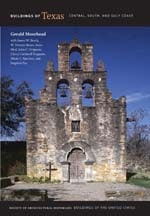
It was in Galveston on June 19, 1865, that U.S. Army general Gordon Granger enacted the Emancipation Proclamation, ending slavery in Texas. During the period of Reconstruction following the Civil War, Texas towns developed their earliest African American neighborhoods. Unlike older Southern cities east of the Mississippi River, there were no established communities of free people of color in Texas where slavery had been introduced by American immigrants in the 1820s and where Republic of Texas, state, and local laws severely restricted the actions and liberties of free people of color in order to coerce them into leaving Texas. The outstanding monuments of this district, one of Galveston's oldest African American neighborhoods, are its churches. Research by Ellen Beasley indicates that the Avenue L Missionary Baptist Church, formed in the 1840s as the slave congregation of the First Baptist Church, was designed and constructed by African American architect-builders Tanner Brothers of Columbus, Texas. The twin-towered church became a distinctive architectural type characteristic of African American houses of worship in the South in the early twentieth century. As can be seen from the west side of the church, the brick building is attached to the congregation's 1905 wooden church, which was incorporated into the expanded complex rather than demolished.

